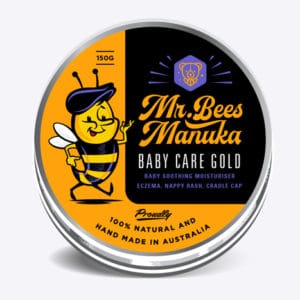Diaper or nappy rash is quite common, but sometimes mothers confuse it with some other skin disorder.
So, it’s essential to know if your baby is experiencing a nappy rash, not something else, such as yeast infection or psoriasis.
Here Is How Nappy Rash Can Bleed In Some Circumstances:
If not treated on time, nappy rash can sometimes become a severe condition and start to bleed.
Although it’s possible to treat it with an anti-yeast ointment, it is advisable to prevent nappy rash by frequently changing your baby’s diaper and keeping the bottom dry.
Most babies get diaper rash at some point, so it’s not something you should worry about. However, if it gets severe and challenging to treat, it’s good to see a doctor.
Try at-home preventive treatments to make sure it doesn’t happen in the first place. But if it does, you can take immediate action to ensure that it doesn’t bleed.
Here we will look at the causes of nappy rash and why it bleeds.
We will also discuss the treatment options available for severe diaper rash from broken skin. So, let’s get started.
-
Baby Care Gold 150gm$37.00
Does Nappy Rash Bleed?
Diaper rash is mainly caused by allergic and irritant dermatitis, and it’s a common condition in babies aged 6 to 12 months.
Allergic inflammation is caused by an allergy to the diaper’s material or the wipes used for wiping off the bottom.
On the other hand, the irritant rash is caused by prolonged exposure of skin to pee or stool or the rubbing of diapers against the skin.
Another type of diaper rash, known as psoriatic rash, is an inflammatory condition that may also lead to bleeding.
Bleeding diaper rash is best treated by keeping the butt as dry as possible.
However, if your baby is in pain due to the inflammation and irritation, you may also use some topical ointments (using a natural product is better than using a steroid cream), to get rid of it quickly.

What Causes Bleeding Diaper Rash?
A complicated diaper rash is often a result of tight-fitting diapers that rub or chafe against the skin and cause irritation.
Your baby might also be suffering from yeast or fungal infection along with diaper rash, which complicates the condition and causes bleeding.
It is also possible that your baby’s skin is so sensitive that the diaper causes an allergic reaction.
If that’s the case, change the diaper brand you are using or if the condition is too severe, try to get rid of diapers altogether.
Another common reason for getting bleeding diaper rash is a new food you recently added to your baby’s diet.
Your baby might not be digesting it well, or it is causing an allergic reaction. To get rid of this type of allergy, stop giving her that food.
-
Baby Care Gold 150gm$37.00
How Do You Treat Severe Diaper Rash from Broken Skin?
Diaper rash with broken, infected, or inflamed skin is even more painful and difficult to treat. Here are a few at-home treatments that you can try to make sure your baby’s diaper rash doesn’t complicate;
• Use creams and jellies: Barrier creams available over the counter are effective in preventing and treating mild to severe diaper rash. They contain non-nano zinc oxide to promote healing by sealing out moisture.
• For raw and broken skin, soak your baby’s bottom in luke warm water in the bath with baking soda (1 teaspoon) for about 10 minutes. Then dry it thoroughly and apply an ant-yeast ointment before putting on a diaper.
• You can also use a natural diaper cream for the treatment of severe nappy rash from broken skin. We make a product that is called Baby Care Gold which includes Manuka, Leatherwood,Zinc Oxide, Aloe Vera, Coconut oil, Shea butter and is completely natural baby cream for your to use.
To prevent diaper rash, make sure you don’t use any fragranced products or those that come with many chemicals. Also, use breathable cotton clothes and give your baby tummy time at least 3 or 4 times a day.
If you see blisters on the diaper area that won’t go away even after several treatments, it’s time to take your baby to a pediatrician.
Don’t let this condition linger for a long duration, or it will become too complicated and excruciatingly painful.

Is Bleeding In Diaper Rash Connected With Teething?
Diaper rash most commonly occurs when your baby sleeps in poopy diapers, has diarrhea, or is on antibiotics.
Rashes may also occur when the mother is nursing, and she is on antibiotics. The best way to prevent nappy rash is to create a protective barrier between the skin and the diaper using Manuka honey or cream containing Zinc oxide.
Some mothers tend to connect diaper rash with teething. However, it’s essential to know that there is no direct connection between teething and nappy rash.
Some babies get diarrhea when they are teething, and if this happens, their skin may be exposed to loose stool for a long time and cause irritation and eventually nappy rash
The teething rash looks like red patches with minor bumps, and the skin may or may not be chapped or broken. This rash doesn’t stay long and usually goes away as soon as the tooth appears, and diarrhea subsides.
Your job as a mother is to ensure at all times that your baby’s skin is dry. And if she is suffering from diarrhea due to teething, you need to change her diaper frequently.
-
Baby Care Gold 150gm$37.00
Conclusion
Diaper rash is pretty common in babies until the age of 3, but it becomes a concern for mothers when it starts to bleed.
Using high-quality diapers and changing them frequently can prevent nappy rash. But if it does occur, you have to make sure that it’s not painful and doesn’t bleed.
At-home treatments are usually the best, including applying mild anti-yeast ointments and cream to the affected area. You can also use baking soda within a bath (1 tablespoon) in luke warm water for 10 minutes.
It’s also good to let your baby have some time without nappies 3 or 4 times during the day to avoid getting too much contact with diapers. Letting the skin breath is a good idea!



